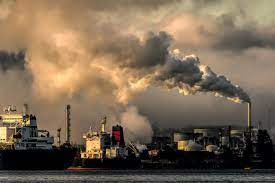U.S. Fuel Cycle Technologies R&D program for Next Generation Nuclear Materials Management
Introduction:
The U.S. Fuel Cycle Technologies R&D Program is a strategic initiative by the U.S. Department of Energy (DOE) to develop advanced technologies for a sustainable nuclear fuel cycle. It aims to ensure safe, secure, and efficient management of nuclear materials.
Objectives:
-
Close the fuel cycle: Develop technologies for recycling spent nuclear fuel to reduce waste.
-
Enhance safety: Improve the design and operation of reactors and fuel processing.
-
Reduce proliferation risk: Create systems that minimize the risk of nuclear material diversion.
-
Support sustainability: Optimize resource use and waste disposal.
Key Research Areas:
-
Advanced Recycling Technologies: Develop methods to separate and reuse valuable actinides from spent fuel.
Waste Management: Innovate long-term storage and disposal solutions for high-level nuclear waste.
-
Proliferation Resistance: Design safeguards and monitoring for secure material handling.
-
Material Development: Create next-generation fuels and cladding that withstand extreme conditions.
Impact:
This program supports the U.S. goal of reliable, low-carbon energy while addressing environmental and security concerns. By advancing next-generation technologies, it helps manage existing waste, extends fuel resources, and maintains global leadership in nuclear innovation.
Background and Need
The U.S. relies on nuclear energy for about 20% of its electricity generation. However, the current once-through fuel cycle means spent nuclear fuel is stored as waste, creating challenges for long-term disposal and resource use.
The Fuel Cycle Technologies (FCT) R&D Program, under the DOE’s Office of Nuclear Energy, aims to:
-
Close the fuel cycle through recycling and reprocessing.
-
Reduce the volume and radiotoxicity of high-level waste.
-
Develop advanced reactors compatible with new fuels.
-
Strengthen nonproliferation measures.
Main Components
The program focuses on three broad strategies:
-
Once-Through Cycle Improvements: Enhancing current reactor fuels to extend burnup and improve safety.
-
Modified Open Cycle: Recovering some materials from spent fuel to reduce waste and use resources better.
-
Closed Fuel Cycle: Developing fully recycling-based approaches where uranium and transuranics are reused multiple times.
Key R&D Areas
🔬 A. Advanced Separations
Developing chemical and electrochemical methods to separate usable actinides (like uranium and plutonium) from fission products, making recycling more efficient and cost-effective.
Examples:
-
Pyroprocessing: Uses molten salt to separate actinides.
-
AQUA and UREX+ processes: Solvent extraction for selective separation.
🔬 B. Transmutation
Turning long-lived radioactive isotopes into shorter-lived or stable ones through fast reactors or accelerator-driven systems. This reduces long-term waste storage needs.
🔬 C. Advanced Fuels and Cladding
Designing fuels with better heat transfer, higher burnup, and improved accident tolerance. New cladding materials (like silicon carbide or advanced alloys) can withstand higher temperatures and resist corrosion.
🔬 D. Waste Forms and Disposal
Developing robust waste forms for final disposal of high-level waste that can’t be recycled — e.g., glass (vitrification) or ceramic forms that securely immobilize radionuclides for thousands of years.
🔬 E. Safeguards and Security
Integrating proliferation resistance by:
-
Monitoring technologies.
-
Improved facility design.
-
Real-time accountancy for nuclear material tracking.
Challenges
-
Cost: Recycling and advanced reactors are expensive compared to conventional once-through cycles.
-
Public Acceptance: Waste repositories and recycling plants often face local opposition.
-
Nonproliferation: Recycling plutonium can pose security risks if not well safeguarded.
-
Regulatory Hurdles: Complex licensing and safety reviews for novel fuel cycle facilities.
International Collaboration
The U.S. collaborates with partners like the IAEA and countries like France and Japan that have experience with closed fuel cycles and recycling (e.g., France’s La Hague plant). These partnerships help develop global standards and share best practices.
Future Outlook
-
Advanced reactors (like fast reactors, molten salt reactors) are designed to work hand-in-hand with closed fuel cycles.
-
Small Modular Reactors (SMRs) may use advanced fuels and enable distributed recycling.
-
Ongoing R&D could make fuel recycling safer and more economical, supporting climate goals and energy security.
✅ Conclusion
The Fuel Cycle Technologies R&D Program is a key part of the U.S. nuclear strategy. It aims to modernize how nuclear materials are managed, make nuclear power more sustainable, and ensure that the benefits of clean energy are balanced with environmental responsibility and national security.





Comments
Post a Comment